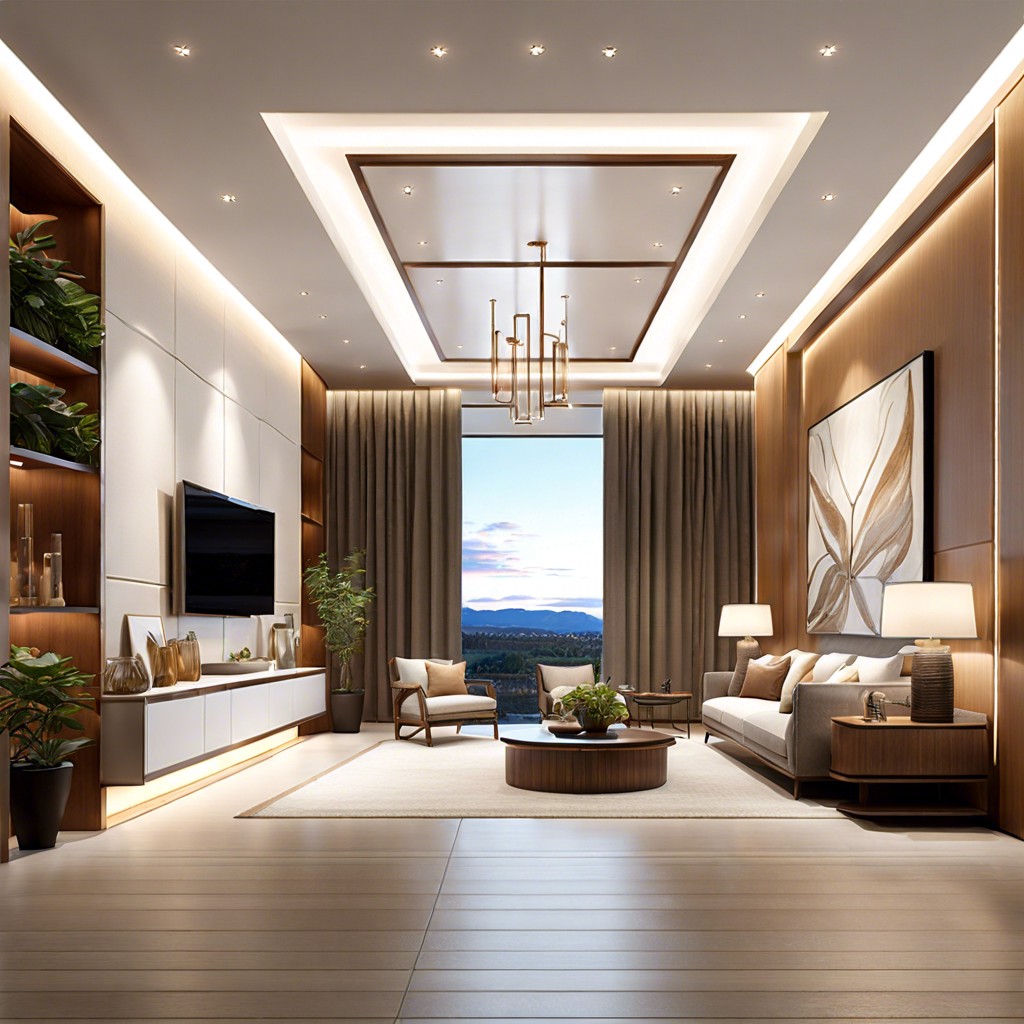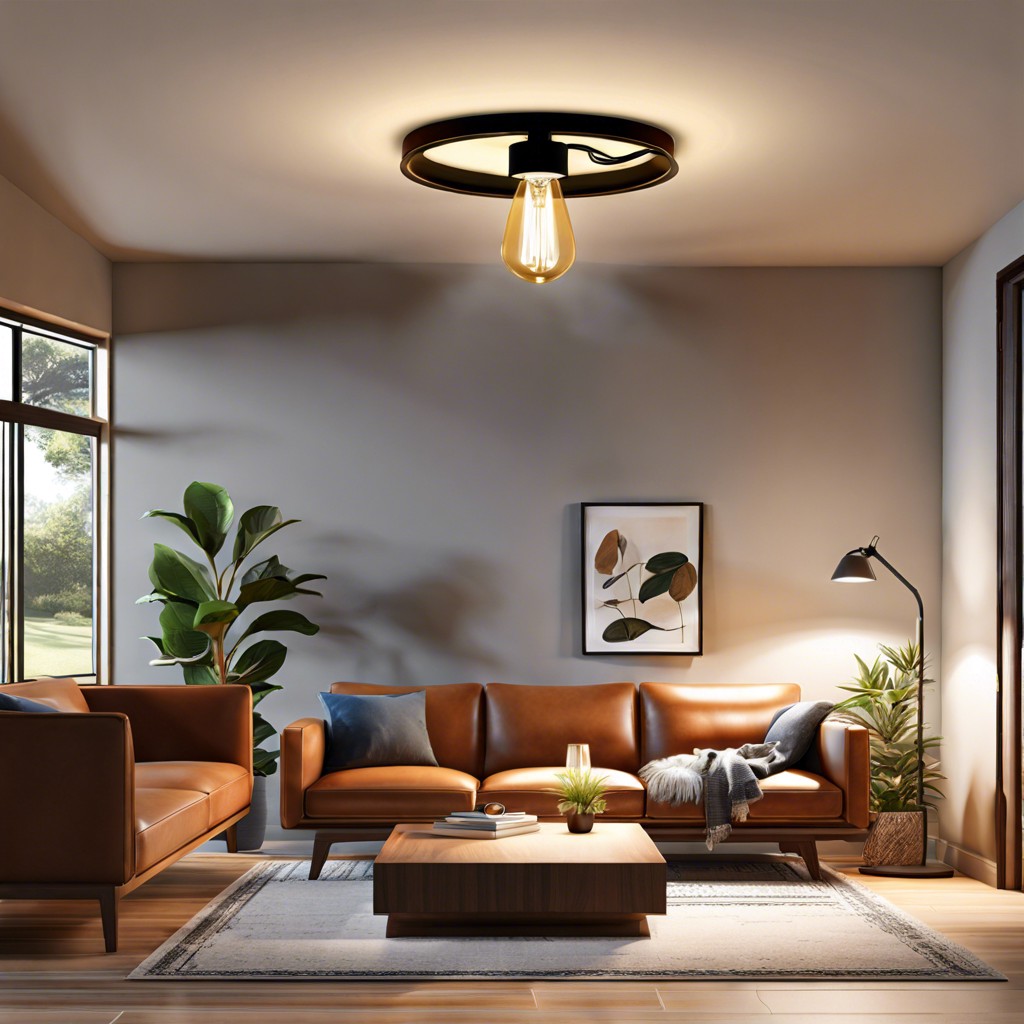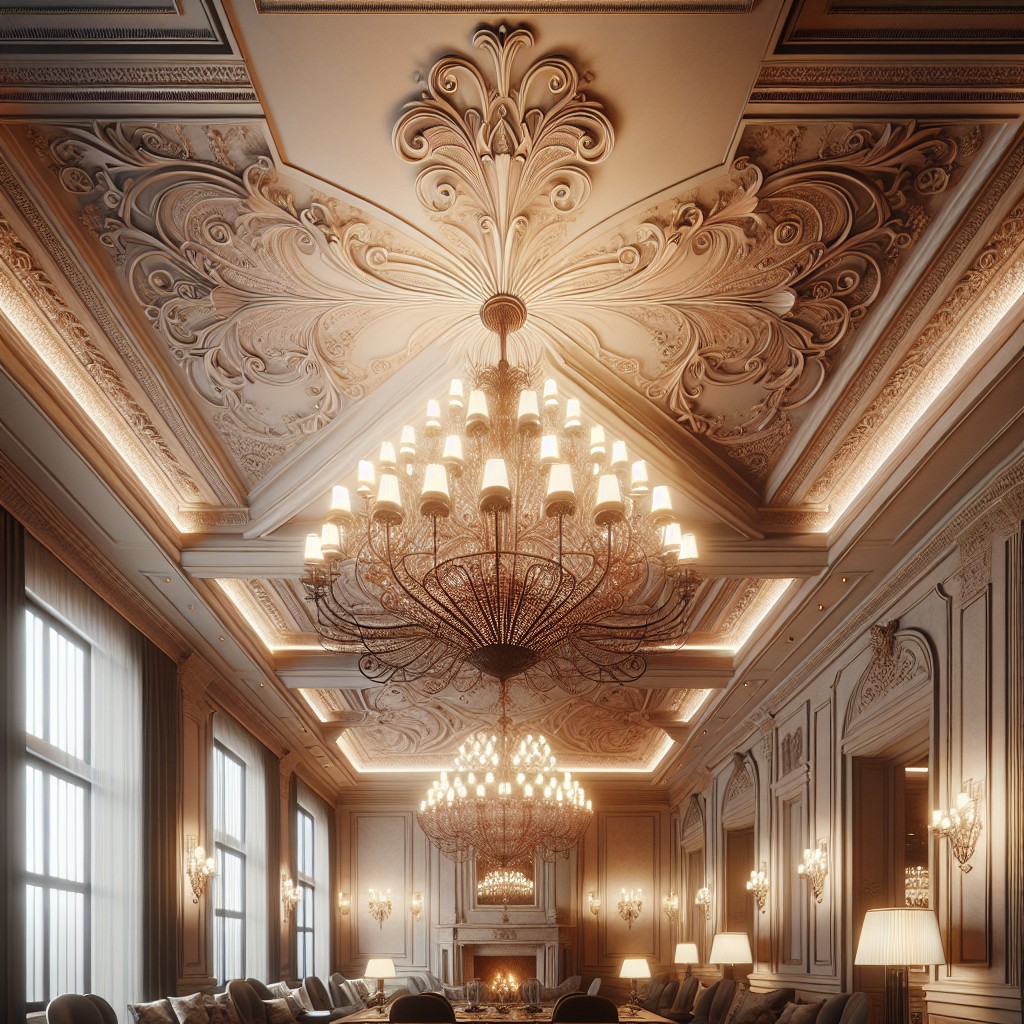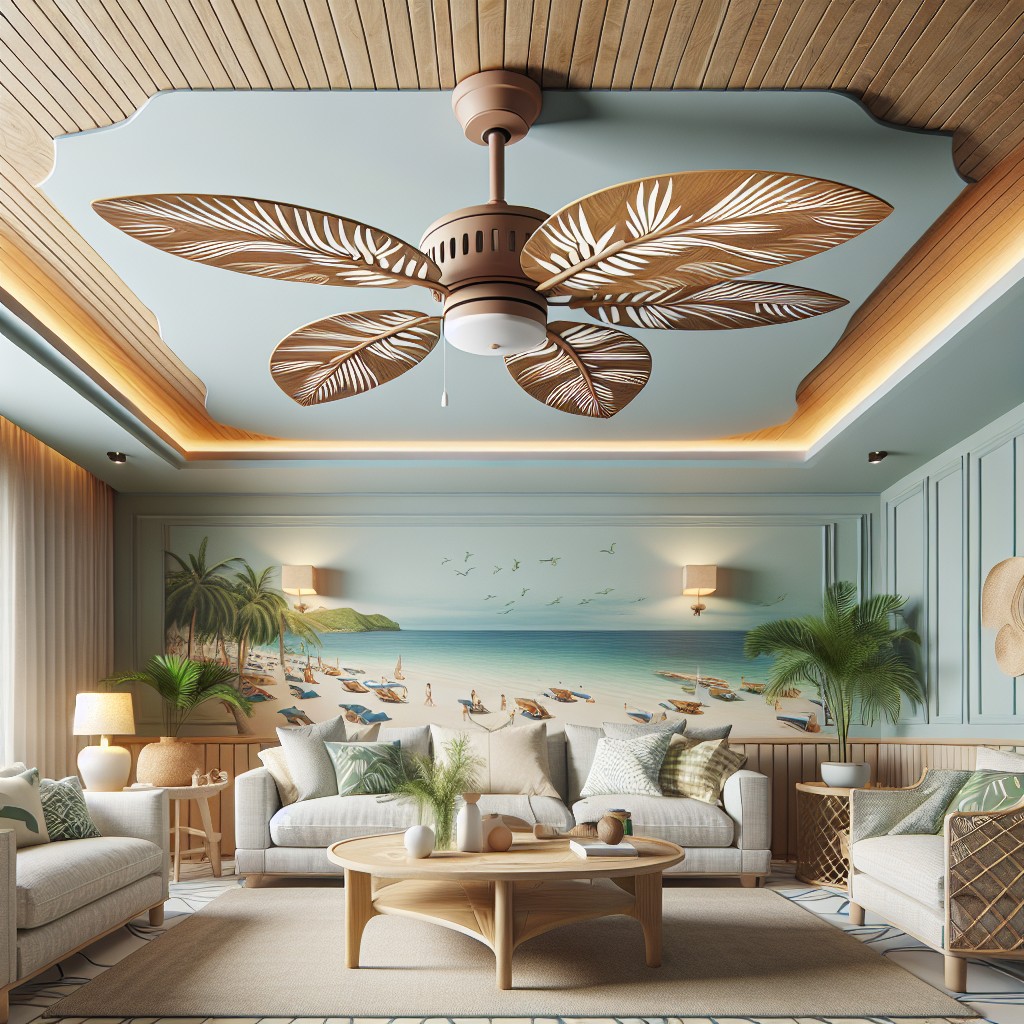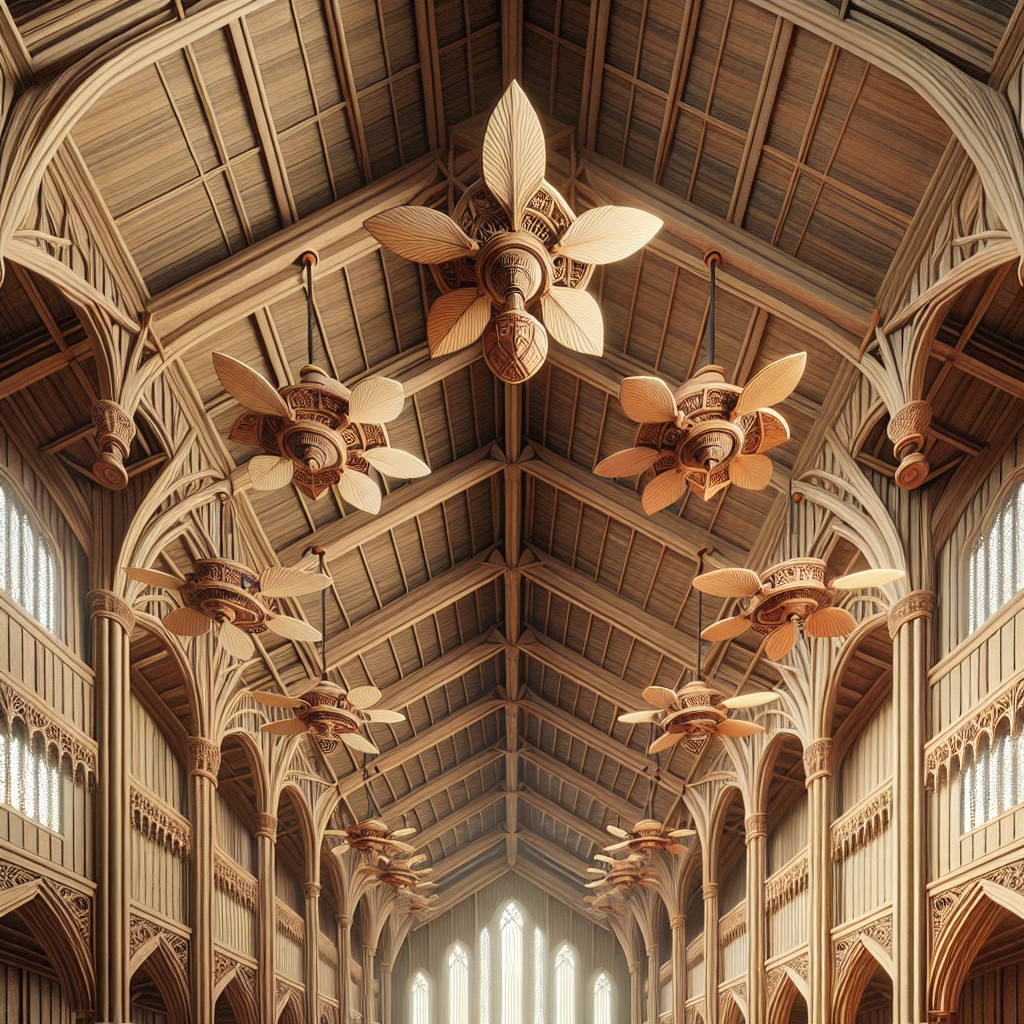Last updated on
Explore the world of LED lights that don’t attract bugs, because basking in a bug-free glow enhances comfort and aesthetics simultaneously.
These are my unique design concepts made using design tools. I hope you find them inspiring!
Nothing quite dampens an outdoor gathering like a swarm of unwelcome insect guests. Therefore, selecting the right outdoor lighting, inclusive of LED lights that don’t attract bugs, is vital.
While there are many commonly known solutions, this article digs deeper, bringing you fresh & unique ideas to complement your existing knowledge.
You can look forward to a trove of new perspectives meant to shed light without putting out the welcome mat for bugs.
Rest assured, at the conclusion of this enlightening read, you will find resources linking back to some of the best of our discussed ideas.
Let’s plunge in and explore this buzz-free world together!
What's Inside
Solar-powered LED Lights: Eco and Bug-friendly
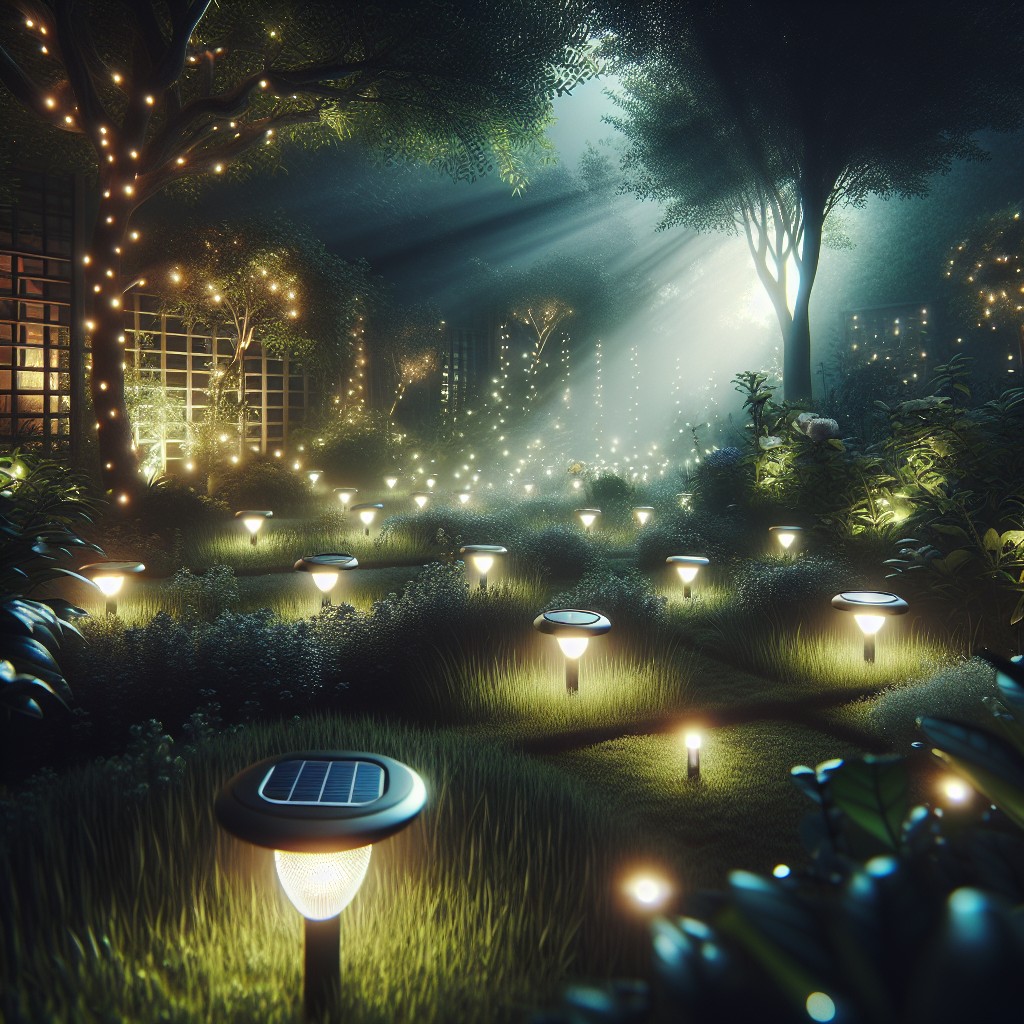
Harnessing the power of the sun, these illuminations are a dual-faceted solution for an environment-friendly household. Since they store energy throughout the day and automatically turn on when the night falls, they eliminate the hassle connected with manual operation.
Interestingly, solar-powered LEDs prove surprisingly useful in deterring insects. Unlike traditional light bulbs, LEDs emit little to no UV light. Through spectrum control, they produce bright light without the wavelengths that typically attract bugs.
Moreover, the energy-saving feature of solar LEDs contributes to the ecosystem preservation, which positively affects the overall insect population and its balance with nature. Also, these lights minimize energy costs, making them a cost-effective solution for an outdoor setup.
Lastly, a wide array of design options, from standalone units to stylish string lights, provides adaptability to any aesthetic. Solar LEDs, therefore, can deliver functionality and style while keeping you bug-free and promoting environmental consciousness.
Using Colored LED Lights to Deter Bugs
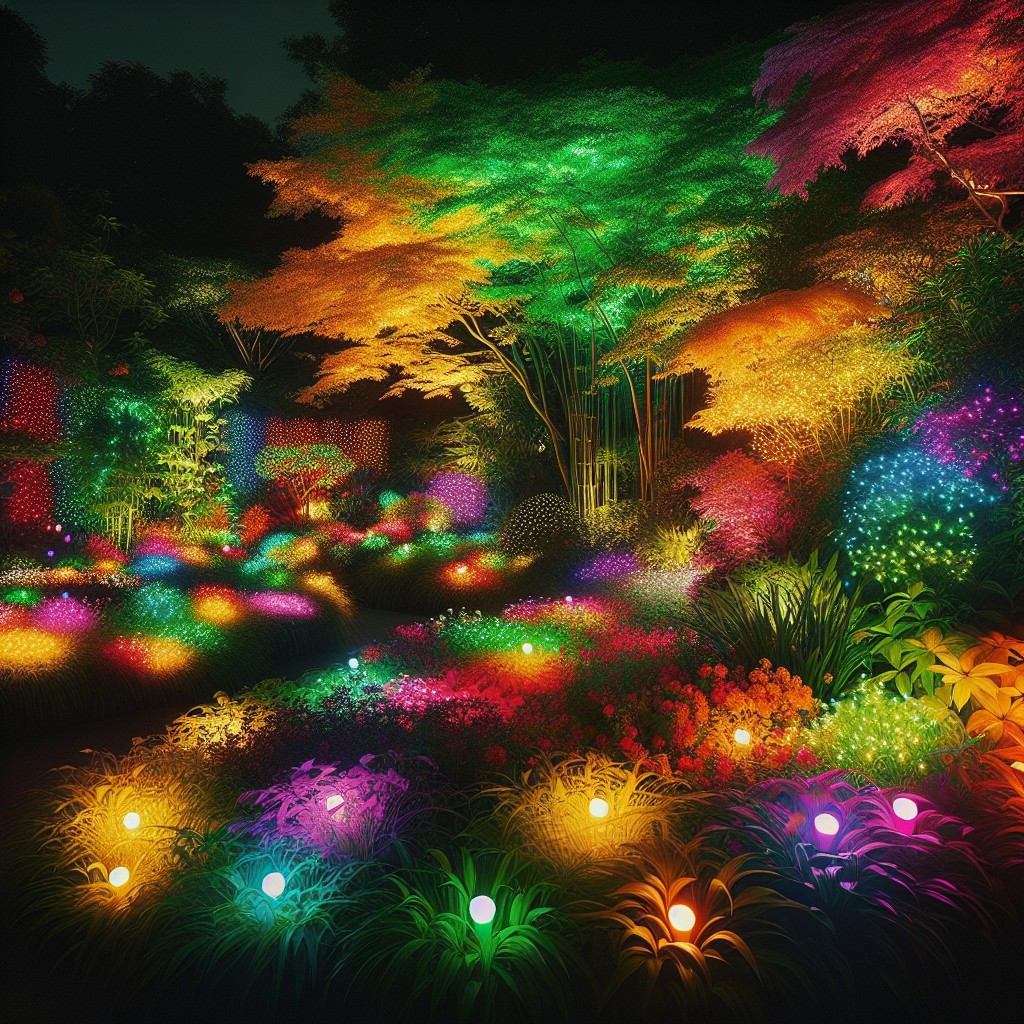
Interestingly, insects aren’t attracted to all light colors. Most pests are drawn towards bright, white lights, particularly those with high levels of blue and ultraviolet wavelengths. However, certain shades, such as yellow, pink, or orange, are not as appealing to these tiny creatures.
While it might seem unconventional, swapping your white LED bulbs for colored ones can make a noticeable difference in reducing the presence of bugs around your house. Here’s why:
- The shorter wavelengths of colors like blue and ultraviolet tend to lure bugs. Yellow or warm-colored lights, having longer wavelengths, don’t attract them as much.
- Blue or ultraviolet light can interfere with insects’ navigation and mating; hence, they tend to be drawn towards it. On the other hand, warm colors don’t disrupt these processes.
- Outdoor LED lamps with a specially designed yellow spectrum are specifically made to be less attractive to insects.
Choosing the right color for your LED lights isn’t just about aesthetics or creating a particular mood – it might be the bug deterrent you’ve been searching for.
Bug-repelling LED Lights: How Do They Work?
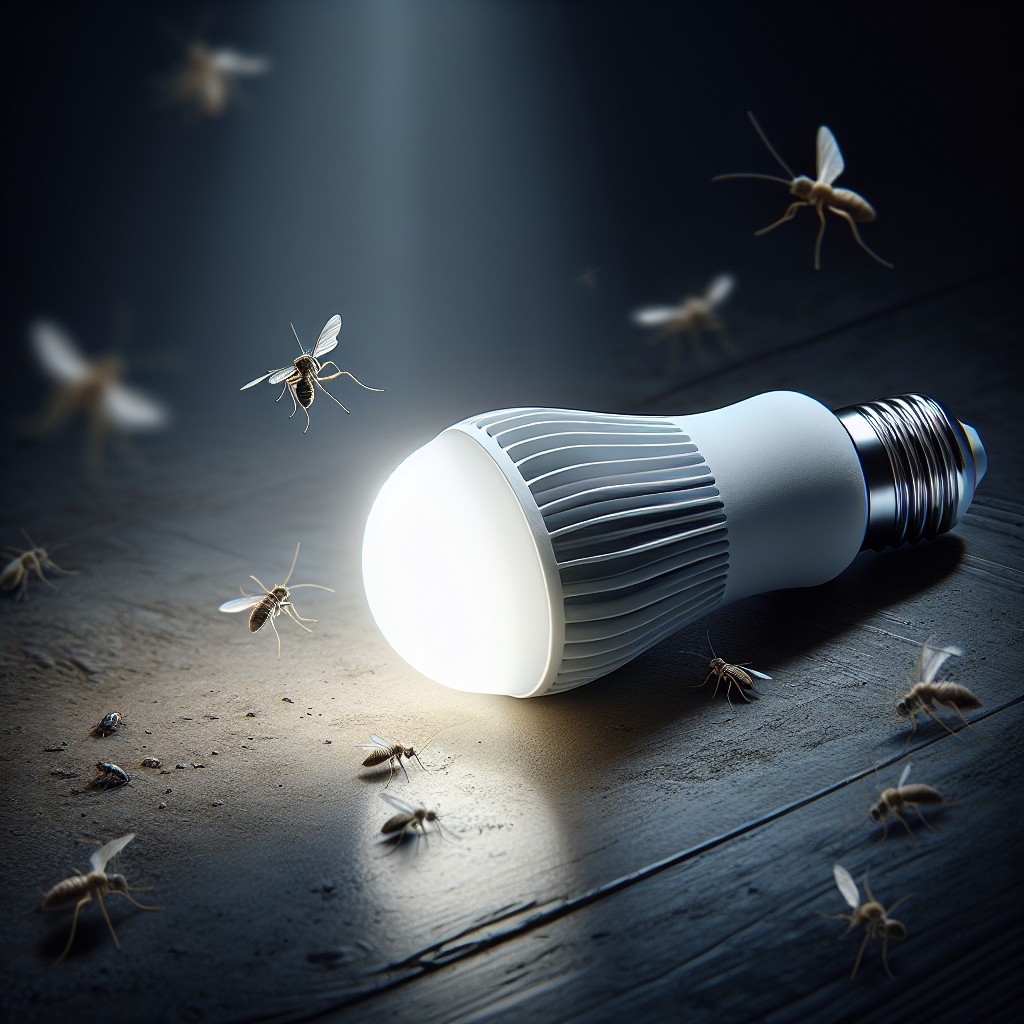
Bug-repelling LED lights are a unique blend of scientific allure and technology. The magic lies in their wavelengths. Generally, light-emitting diodes (LEDs) release light at distinct wavelengths, and specific wavelengths tend to attract fewer insects.
Most common bugs like mosquitoes and moths are lured to short-wavelength light, typically emitted by traditional incandescent or halogen lamps. Bug-repelling LEDs, however, release light at long wavelengths, usually beyond the attraction spectrum for common insects. This innovative tech tweak in output reduces their attractiveness to pests.
The real game-changer is the color of the light. Yellow or warm LEDs are much less exciting for bugs compared with traditional white or ultraviolet lighting. Yellow LED bulbs emit more light at long wavelengths, acting as a perfect disguise against nosy insects.
Practicality is another plus. Same as your typical LEDs, their bug-deterrent counterparts are energy efficient and promote longevity, making them a sustainable and cost-effective option in the battle against creeping and flying invaders.
Meanwhile, scientists continue to experiment and improve on these bug-repelling strategies, so future advancements in LED technology may yield even better results. Just imagine: a world where homely evening BBQs and late-night chats on the patio can proceed, uninterrupted by uninvited flying guests!
Shields for LED Lights to Prevent Attraction of Bugs
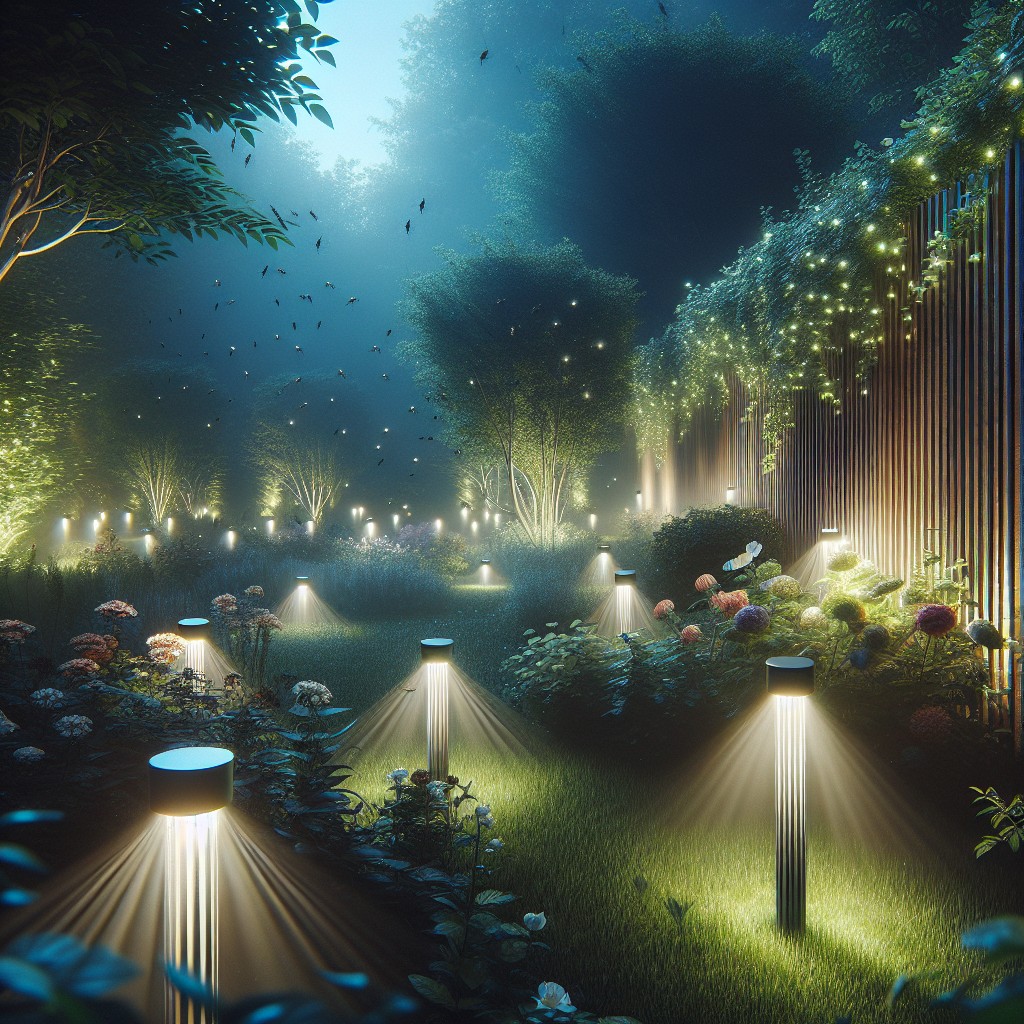
Shields come in handy for protecting your LED lights from attracting bugs. They usually work by blocking certain wavelengths that make lights irresistible to insects. A well-constructed shield can effectively lower the luring intensity of your LED lights.
One popular choice is yellow bug-repellent shields. They alter the apparent color and brightness of the lights, making them less attractive to bugs.
In addition to shields, bug-resistant covers with a distinct yellow shade are equally effective. These covers are specifically designed to filter out wavelengths bugs love most. They can be conveniently slipped over existing LED light bulbs, making installation a breeze.
Remember, though, that shields and covers might alter your lighting environment slightly. Be ready to enjoy a subtle warm glow that not only keeps bugs at bay but also creates an inviting ambiance. This is a small trade-off for a bug-free environment.
Also, the proper placement and angle of your shielded LED lights can further reduce bug attraction. Try to angle your lights away from the areas you’ll be occupying most, such as your deck or patio.
The Role of Light Intensity in Attracting Bugs: LED Vs Traditional Bulbs
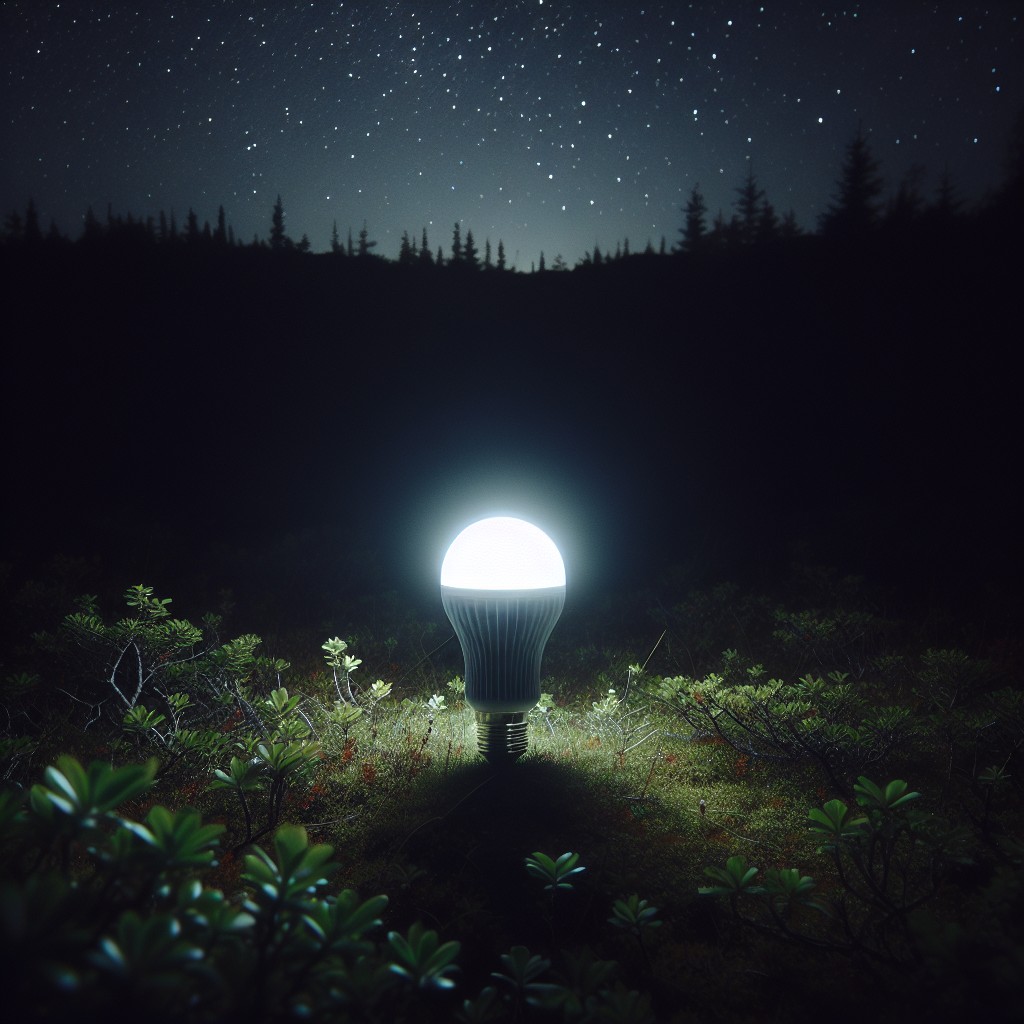
Light intensity plays a crucial role in attracting bugs. Let’s dig deeper into how LEDs and traditional bulbs differ in this aspect.
Traditional bulbs emit a wide spectrum of light including ultraviolet (UV) rays, which are very attractive to bugs. Not to mention, these bulbs are high-intensity light sources that produce a lot of heat, acting like bug magnets.
On the other hand, LEDs aren’t as hot, reducing their allure for bugs seeking warmth. Additionally, they produce more focused wavelengths, which can be adjusted to minimize sections that attract insects. For instance, bugs are less attracted to yellow or warm LEDs as they generate minimal UV light.
It’s also interesting to note that different bugs react to different light intensities. For example, nocturnal insects, like mosquitoes, get attracted to lower-light intensities. So, the intensity of an LED light can be adjusted to minimize their appeal to these creatures.
Remember, the goal isn’t to go completely dark but to find the perfect balance that will let you enjoy a bug-free space without sacrificing illumination. Play with different LED light intensities and see which one works best for your space and bug situation.
Effectiveness of Bug-resistant LED Covers

These specialized covers utilize certain properties to make your LED lights less enticing to bugs. The effectiveness primarily stems from their color and composition, which manipulates the light spectrum emitted by your LED fixtures.
1. Light Spectrum Manipulation: Insects primarily get attracted to ultraviolet (UV) and blue light. The bug-resistant covers designed for LEDs often filter out these hues, reducing the attraction for bugs considerably.
2. Color Gradient: Certain colors, such as yellow, orange, and red, tend not to attract bugs. Hence, using LED covers in these shades can be beneficial in achieving a bug-free environment.
3. Material Quality: Covers made from high-quality, durable materials do an effective job of not only protecting LEDs from bugs but also enhancing the lifespan of the lights.
4. Specialized Functionality: Some versions also come embedded with insect repellants or chemicals that deter bugs, enhancing their effectiveness.
Choosing bug-resistant covers based on these considerations can significantly improve your experience with LED lighting, making your nights less buggy, and more relaxing.
Acclimating Insects: Can Insects Get Used to Bug-resistant LEDs?

While the concept may sound intriguing, studies have shown that most insects do not acclimate or adapt to bug-resistant LEDs over time. This is because LEDs emit a type of light wavelength that’s less attractive to the night-time insects. Moreover, the light spectrum used does not typically fall within the range that these creatures are naturally drawn to. As such, even prolonged exposure doesn’t compel them to adjust their instinctual behaviors.
However, it’s important to note that not all insects respond in the same way. The LED’s effectiveness may vary depending on the species. Certain types of bugs may exhibit reduced attraction, but not a complete indifference. It’s also worth mentioning that bug-resistant LED lights are more effective when implemented as part of a broader bug management strategy.
In summary, while complete acclimation is a distant possibility, the properties of LED lights suggest they will remain an effective tool in keeping most night-time bugs at bay in the foreseeable future.
The Spectrum of LED Lights and Its Effect On Bugs

It’s crucial to grasp the connection between the light spectrum and bug attraction. In truth, not all light is created equal, especially in the eyes of insects.
1. Wavelengths: Insects can see specific light wavelengths better than others. Most bugs are most attracted to ultraviolet light wavelengths, which LEDs do not emit.
2. Visible Light: Most insects are less attracted to the light at the red end of the spectrum, and they hardly notice it. For that reason, you can choose LEDs that emit light in this part of the spectrum to minimize bug activity.
3. Heat: Unlike traditional bulbs, LEDs do not generate heat, making them less attractive to heat-seeking insects.
Keeping these points in mind, you can craft an exterior lighting scheme that deters bugs, instead of attracting them. This could save you a lot of inconvenience, and also be a fun adjustment to nighttime aesthetics!
Are LED Bulbs a Long-term Bug Repelling Solution?
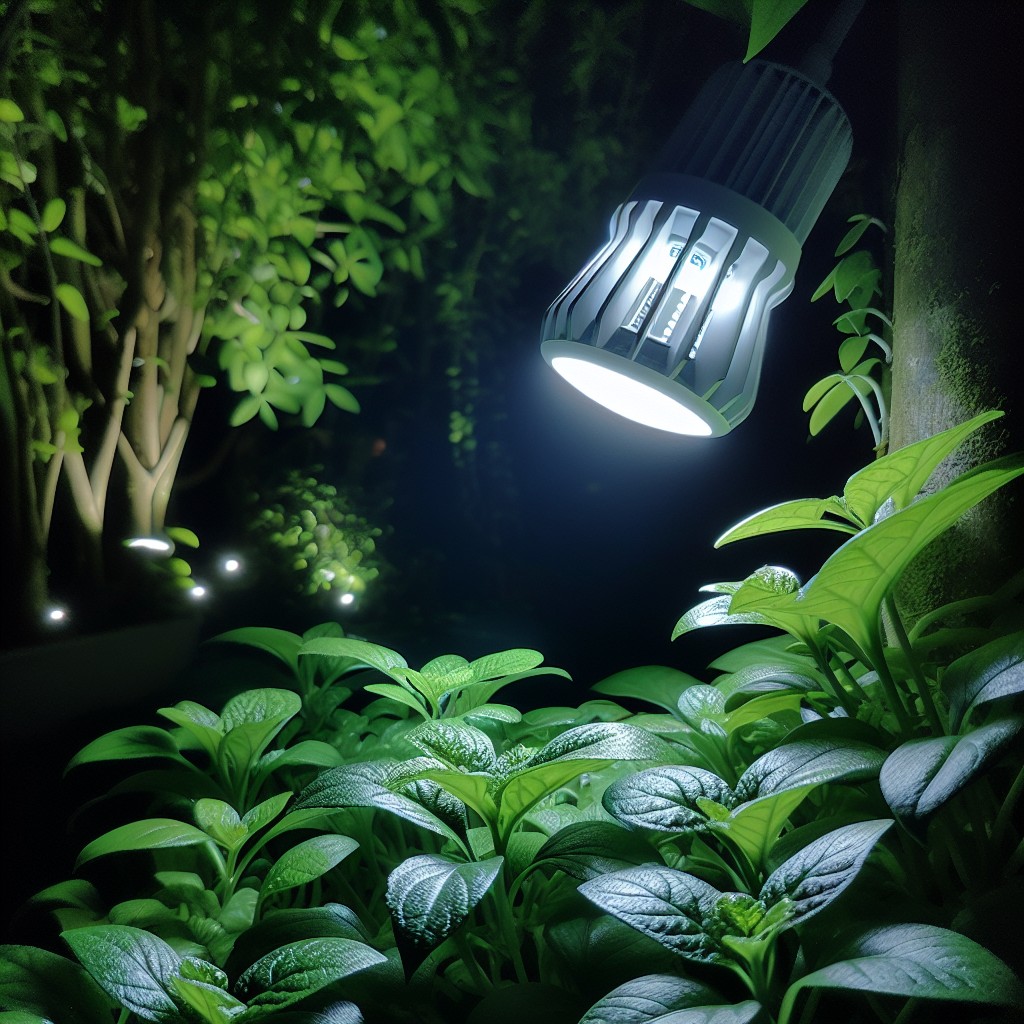
Firstly, it’s crucial to invest in the right type of LED bulbs. Bug-repellent LED lights typically emit a yellow hue or high-color-temperature lights that bugs find less appealing, making these types an excellent choice. One thing to bear in mind though, prolonged exposure may result in certain species acclimatizing to the light, reducing the effectiveness of the bulbs over time.
Setting expectations accurately is as vital as the investment itself. Bug-repelling LED bulbs act more as deterrents rather than bug eliminators. While these bulbs lessen the number of bugs attracted to your lights, they don’t completely get rid of them.
Durability and cost-efficiency characterize LED bulbs, ensuring they’re a long-term solution if used correctly. The lifespan of these bulbs far extends that of incandescent and compact fluorescent options, making them a prime choice for any homeowner seeking a low maintenance solution.
Finally, remember to switch off unnecessary outdoor lights or dim them as much as possible. No light, even an LED, is completely impervious to bugs. Taking such precautionary measures will further enhance the bug-repelling effectiveness of your LED bulbs.
Therefore, bug-repelling LED bulbs stand as a formidable, although not complete, response to uninvited flying guests. They form a critical part of a larger bug deterrence strategy that includes mindful lighting practices and possible use of complementary bug repelling solutions.
Impact of Bug-friendly LEDs On the Ecosystem

Careful selection of LED lights can have a significant impact on our ecosystem. These ‘bug-friendly’ lights reduce the disruption to nocturnal insects, preserving our environment’s natural rhythm.
Here are some points to note:
- Diminishing Bug Disturbance: These LED lights can decrease the disruption to insect behavior, which is often caused by high-intensity lights. This can lead to healthier populations of night pollinators.
- Preserving Food Chains: Light pollution can affect survival and reproduction of bugs, disrupting food chains. LEDs with lower blue light emissions reduce this risk, maintaining balance in our ecosystems.
- Reducing Bird Migration Issues: Excessive light from traditional bulbs can cause confusion in migratory birds. By using bug-friendly LEDs, you are also supporting bird populations.
- Enhancing Plant Health: Nighttime pollinators play a crucial role in plant health. By reducing disturbances to these insects, plant pollination cycles are improved.
Remember, choosing the right LEDs is not just about keeping your patio bug-free, it’s about playing an active part in conserving our environment.
Unconventional Uses of Bug-resistant LED Lights
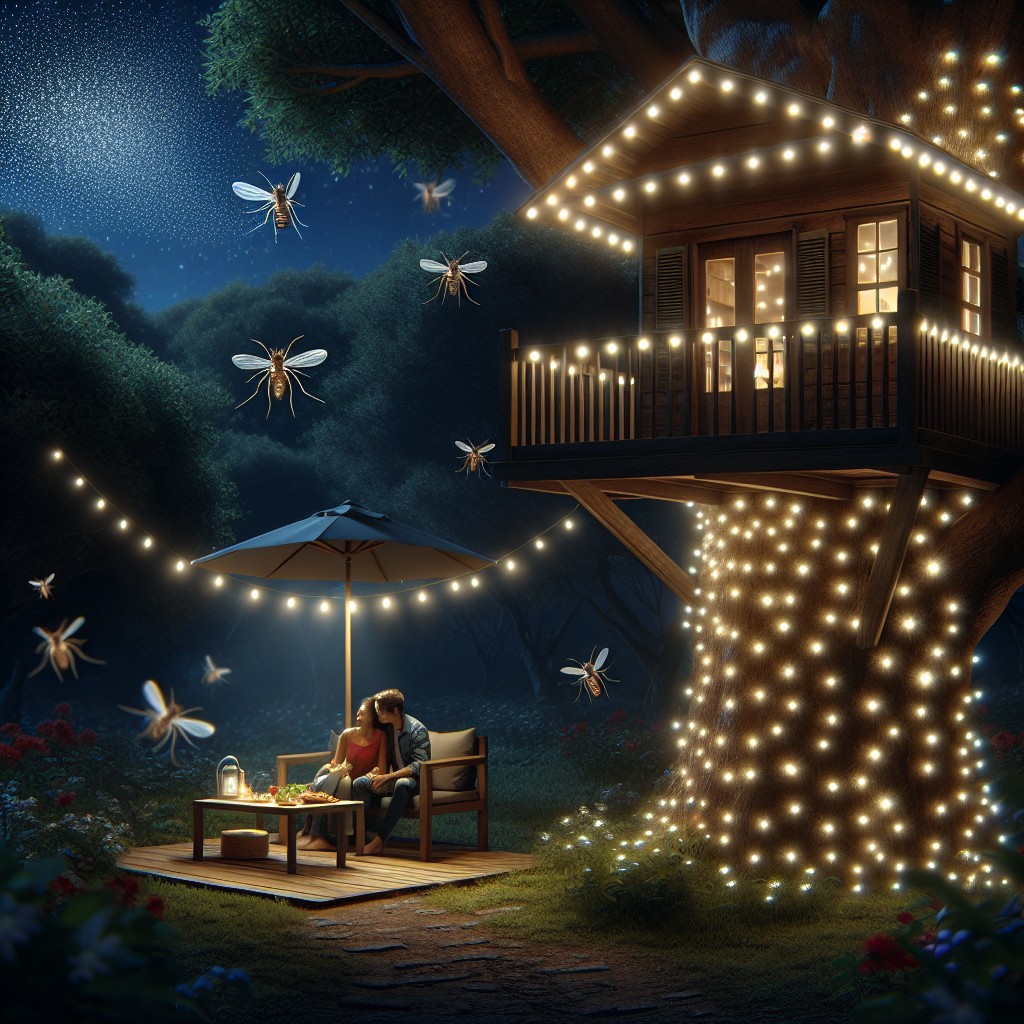
Interesting to note that these lights may find purpose beyond traditional use. For example, setting up a perimeter in a campsite could help keep those pesky bugs away from your sleeping area. In this case, you would outline your tent or caravan with these lights, thus creating a bug-free zone.
Next, consider them for nighttime backyard events. A common problem when hosting outdoor evening parties is bugs swarming around the lights. With bug-repellent LED lights strung across your backyard, you can provide a pleasant, bug-free experience for your guests.
On a smaller scale, these LEDs can play a significant part in your evening reading routine. Placing one of these lights in your reading lamp can ensure a peaceful read without the unwanted buzz of insects.
Lastly, for landscape photographers who need a little light but want to avoid clouds of bugs, these lights serve as a great tool. Using LED bug-resistant lights allows photographers to illuminate a scene without attracting a single bug, making their task a whole lot easier.
LED Lights Versus Bug Zappers: A Comparison
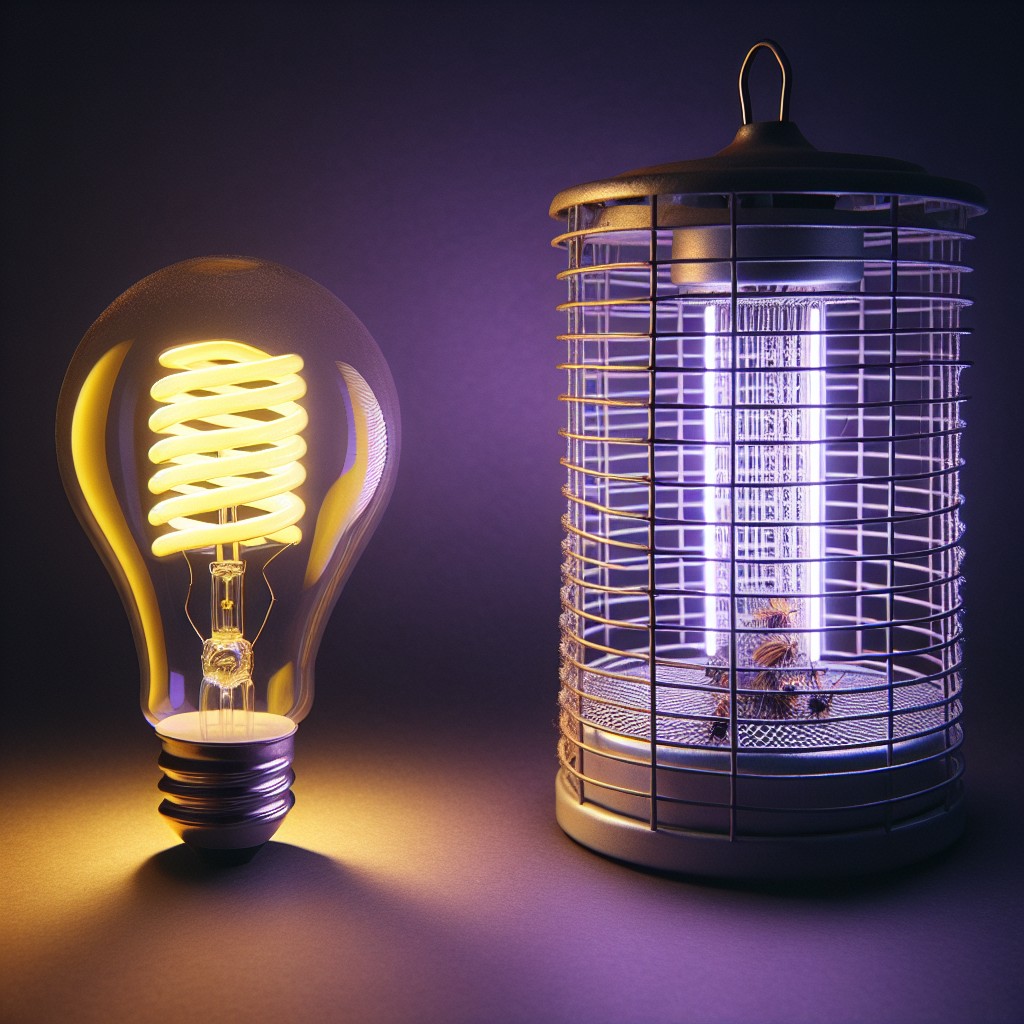
In weighing the benefits and drawbacks of each, it’s essential to look past just the bug deterrent factor. Firstly, LEDs are energy-efficient, consuming significantly less electricity than a traditional bug zapper, which offers great cost savings over time. They also tend to have a longer lifespan, lending to less frequent replacements and hence, lower environmental impact.
On the other hand, bug zappers do exactly what their name suggests – they lure and kill bugs. However, research suggests they often kill beneficial insects more than the pests. Furthermore, bug zappers, while effective, can pose a danger to small children and pets, and often contribute to noise and light pollution.
LEDs provide a more eco-friendly solution; they don’t kill but rather deter bugs. It’s also important to remember the aesthetic value that a well-placed, gentle LED light can offer to your outdoor space, a feature not typically echoed in a bug zapper.
In terms of safety, longevity, cost-effectiveness, and aesthetics, LED lights have the upper hand. However, for areas with severe insect problems where deterrence might not suffice, a bug zapper could be considered a more effective, albeit more environmentally harmful, solution.
The Science of LED Wavelengths and Bug Attraction
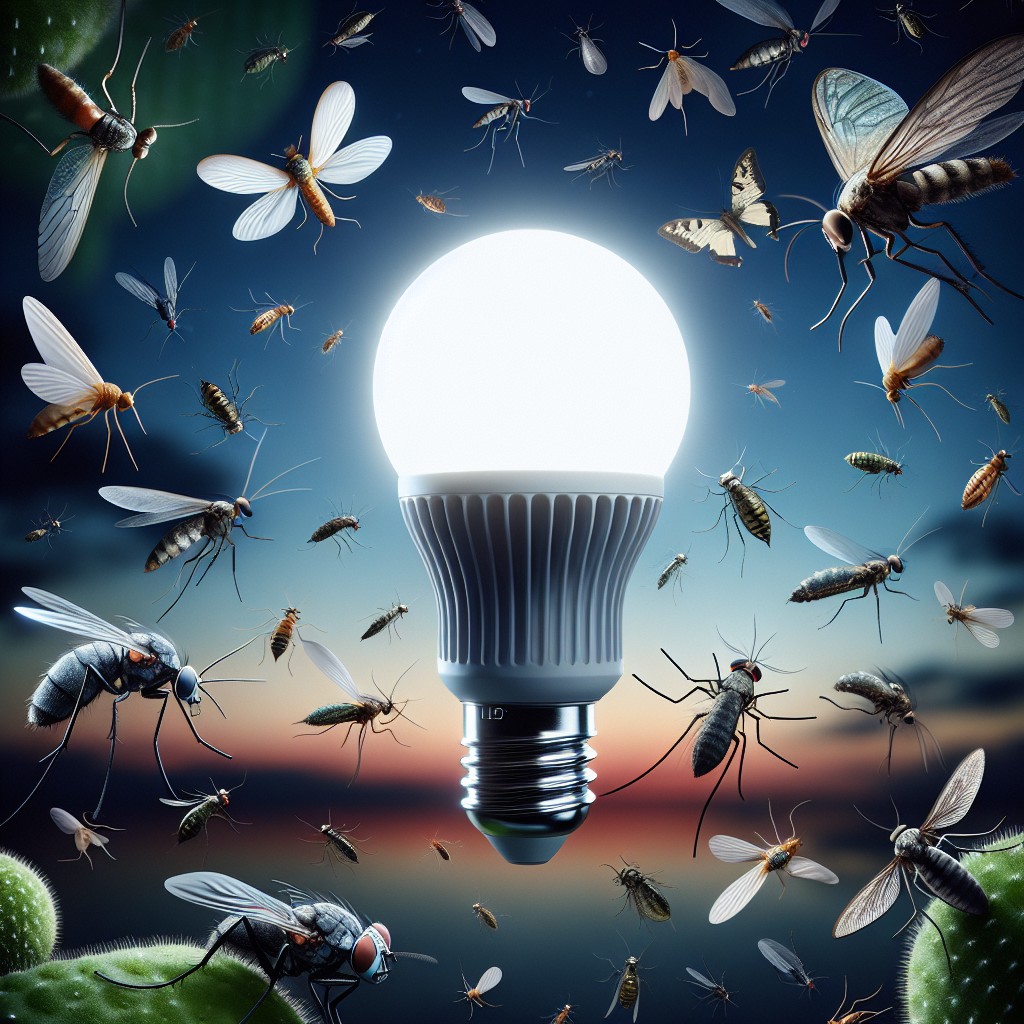
Understanding the impact of wavelengths on bug attraction requires a brief dive into entomology. Studies have shown that insects have distinct visual systems and are naturally more attracted to shorter wavelengths, like ultraviolet light. That’s why traditional light bulbs, which emit a broad spectrum of light including UV, are bug magnets.
On the contrary, LED lights emit very little UV light. Most are designed to emit longer wavelengths, typically in the yellow/red range. Many bugs have difficulty perceiving these colors, thereby reducing their attraction. Investors in LED technology have capitalized on this fact, creating bug-deterrent bulbs for outdoor lighting.
Still, not all LED lights are created equal. Some emit cool white or bluish light, more attractive to bugs due to the broader spectrum they cover, inclusive of shorter wavelengths. As a guiding principle, outdoor LEDs with a color temperature below 3000K, signaling warmer, yellowish light, is least observable by the little critters.
Don’t fret about your garden turning into a creep-crawlies disco. Certain selections in LED lighting can help maintain an ambiance for humans, deterrence for insects.
Choosing the Right LED Light Configuration to Avoid Bugs
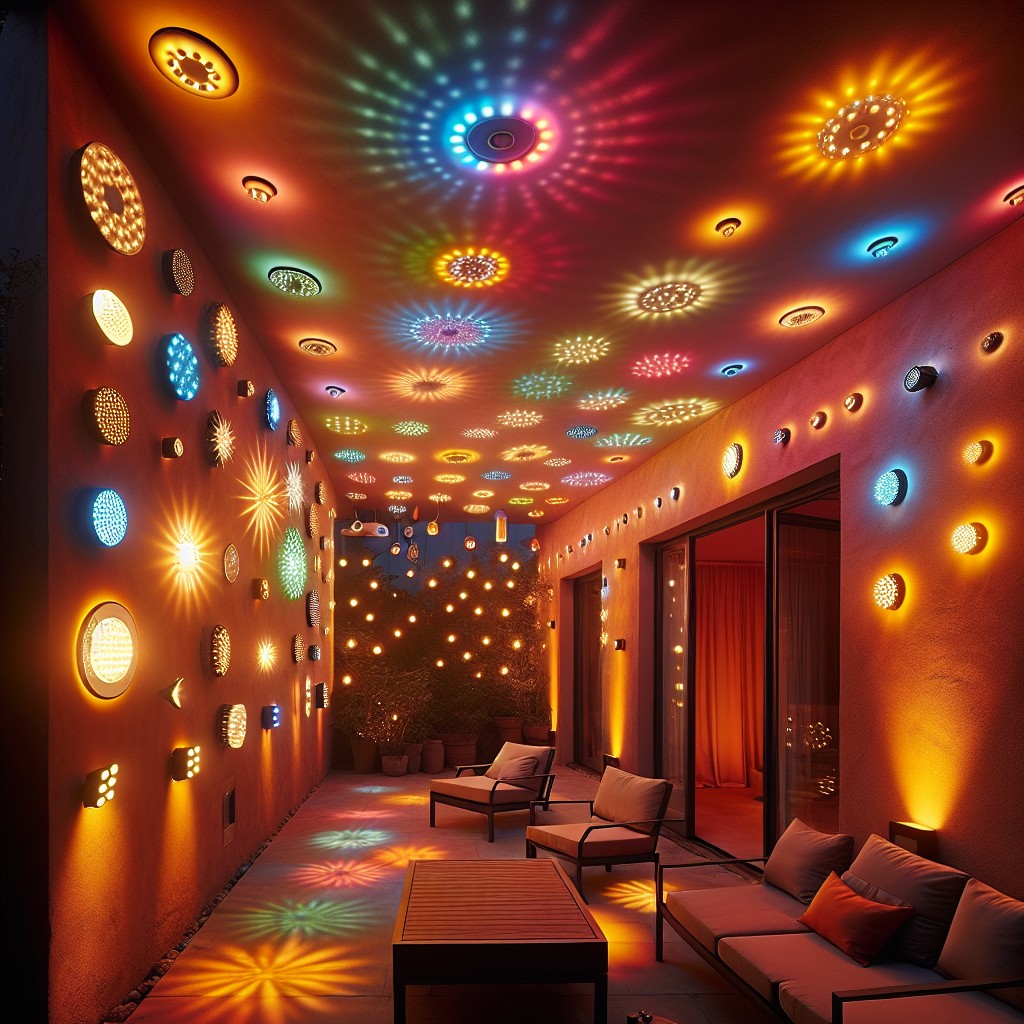
Having the correct LED light configuration is essential in reducing bug attraction. Let’s dive into some key points.
Firstly, think in terms of color temperature. Warmer colored bulbs with lower color temperatures usually attract fewer insects than cooler ones. Look for LEDs specified as ‘warm white’ or those with color temperature below 3000K.
Secondly, look into directional lighting. This type of lighting targets specific areas, creating fewer shadows and dark spots, which are favorite hideout spots for bugs.
Adjustable brightness is another feature to consider. Some bugs are attracted to high intensity light. Therefore, having dimmable LEDs can come in handy, especially during peak bug seasons.
Lastly, consider opting for motion sensor LEDs. Since these lights are only activated when motion is detected, they significantly reduce the time your light is on, thereby reducing bug attraction.
Remember, it’s always about balance. Your goal is to create a comfortably lit environment that caters to your needs, while simultaneously keeping bug attraction to a minimum.
Maintenance Tips for Bug-deterrent LED Lights
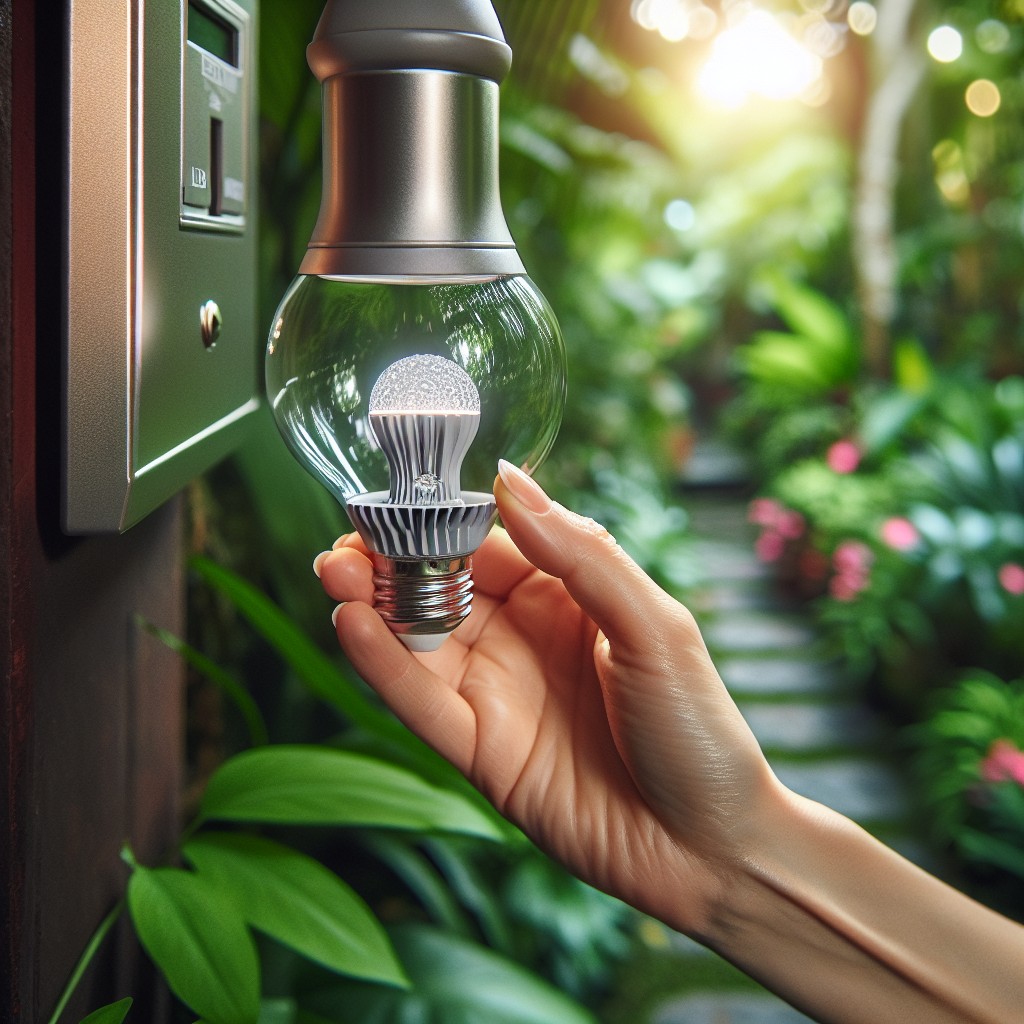
Regular upkeep of your bug-deterrent LEDs will enhance their performance and lifespan. Here are some quick and useful maintenance tips:
1. Dust off LED Lights: Over time, dust particles can accumulate on the surface of the lights, dimming their brightness. Use a soft, dry cloth to clean the bulbs.
2. Weatherproof: Ensure your outdoor LEDs are weatherproof to handle different climatic conditions. Checking the IP ratings (Ingress Protection) can help determine the level of protection provided against elements like dust and water.
3. Positioning: Avoid placing the lights near pools of stagnant water, which often attract bugs. If unavoidable, consider placing them within enclosed fixtures.
4. Timely Replacement: Though LEDs have a long lifespan, they tend to lose brightness over time. If you notice a significant decrease in intensity, it might be time to replace them.
5. Inspect Regularly: Regular inspection to detect any early signs of damage or issues will go a long way in maintaining the bug-deterrent properties of your LED lights.
Remember, just a few minutes of regular maintenance can save hours of bug-trouble down the line!
LEDs With Built-in Insect Repellants
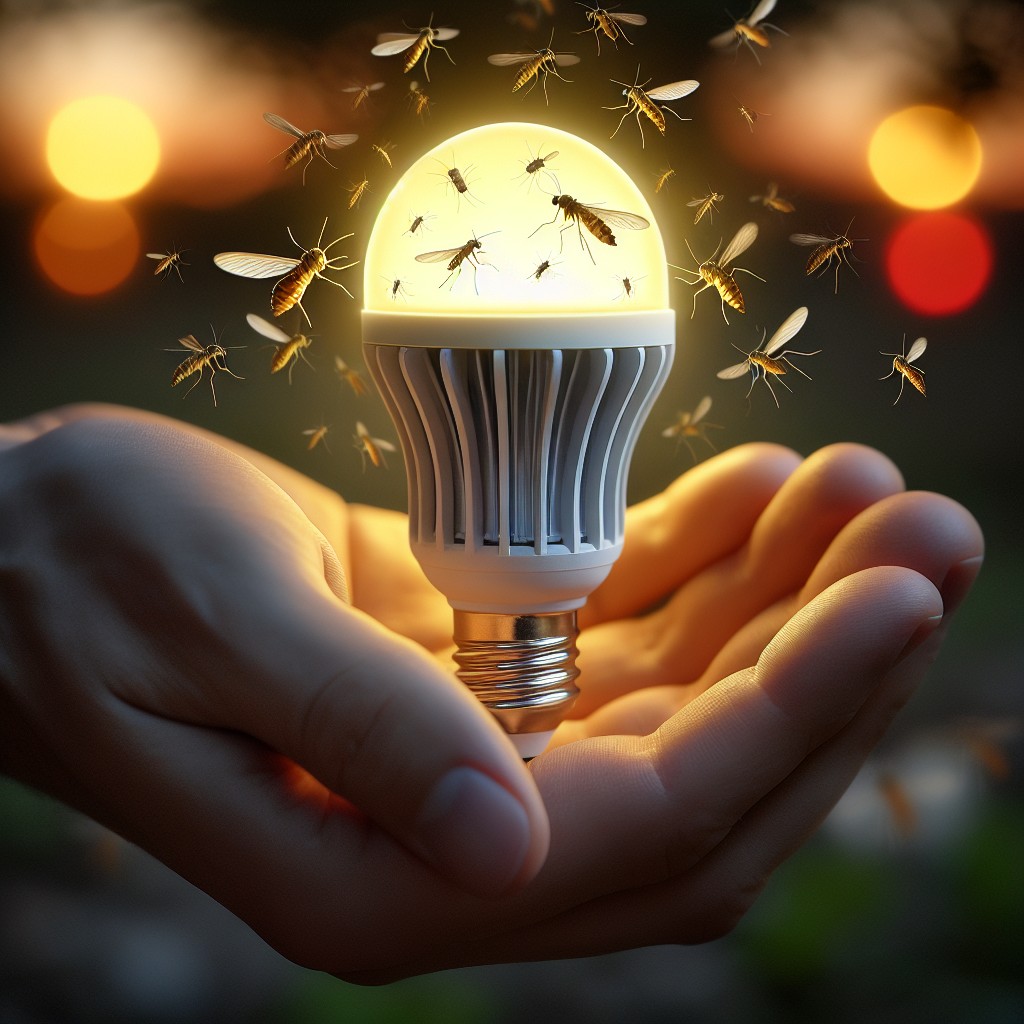
Pioneering in the world of lighting technologies, LEDs with built-in insect repellants blend efficacy and convenience. These lights emit a spectrum of light that is less enticing to bugs, reducing the number of unwanted insects around your home without the use of harmful pesticides.
1. Method: They work by releasing a tiny amount of a synthetic version of insect repellant, invisible, and undetectable by humans.
2. Spectrum Repellant: The LED emits a light range unappealing to bugs, breaking the attraction cycle.
3. Energy Efficiency: Despite this extra feature, these LEDs maintain the same low energy consumption.
4. Longevity: Along with the known LED advantage of a longer lifespan, the infusible repellant also lasts over an extended period, requiring fewer replacements.
5. Safety: These LEDs are safe around children and pets, with all materials used being non-toxic.
As our tech advances, the healthy balance between lighting up areas and controlling insects becomes simple and clean. These LEDs are a noteworthy brick on the path to an eco-friendly and bug-free existence.
Advancements in Bug-repelling LED Technology
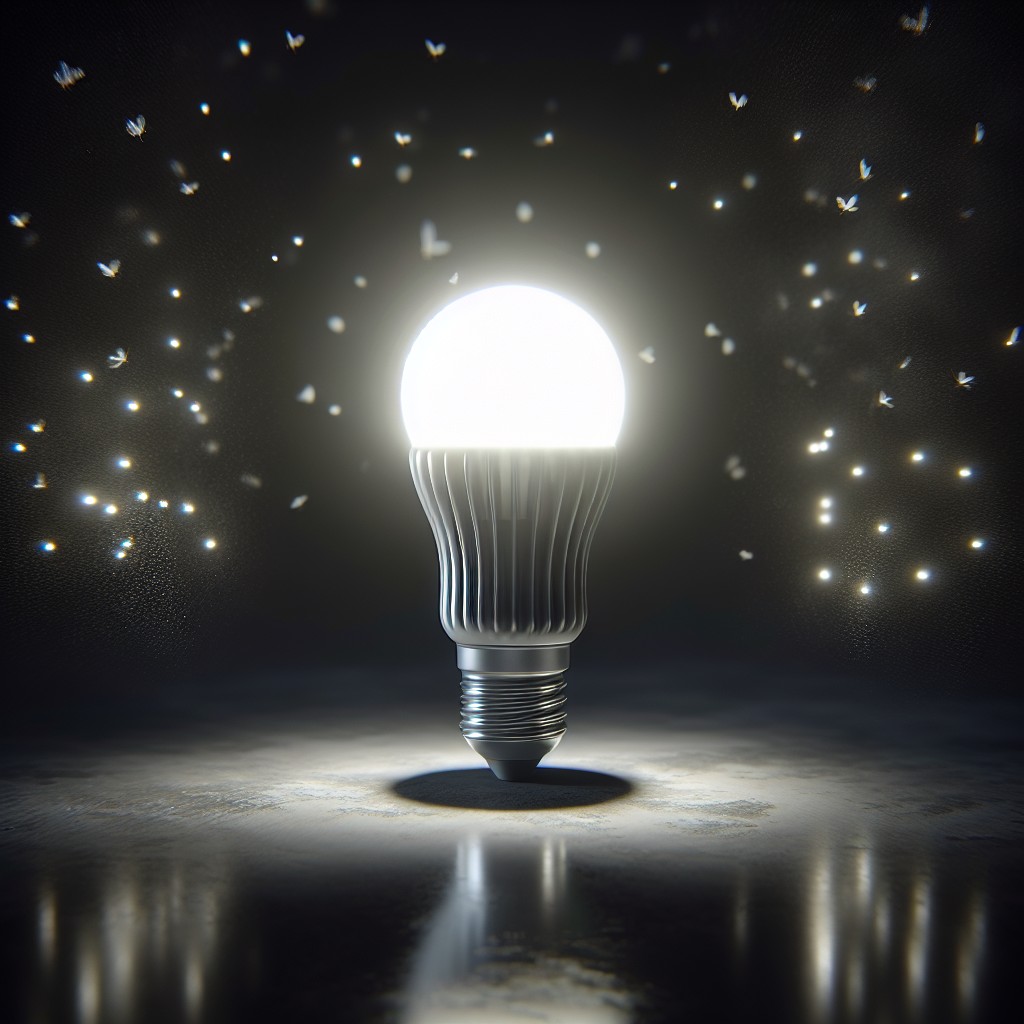
Cutting-edge technology brings us innovative designs of bug-repelling LED lights, packed with impressive features to deter pesky pests from your space. Some models now utilize a specific spectrum of light, whose wavelengths are unattractive to most common insect species. An increase in energy efficiency in newer models also contributes to a less heat-emitting light, making your outdoor light less appealing to bugs that are drawn to warmth.
Additional exciting advancements include the option for flicker-free features. This technology option emits a steady stream of light without rapid, high-frequency flickering, a feature known to be unattractive to bugs.
Moreover, some advanced LED lights even come equipped with integrated bug-repellant features. These LEDs release subtle, bug-deterring aromatics that ensure your lighting solution is not an open invitation to all the bugs in the vicinity.
These advancements serve as powerful tools to manage bug attraction effectively, paving the way for a bug-free, comfortable outdoor space. They’re a testament to how high-tech solutions are adapting and evolving for the betterment of our daily life.
Designing a Bug-free Outdoor Area Using LEDs
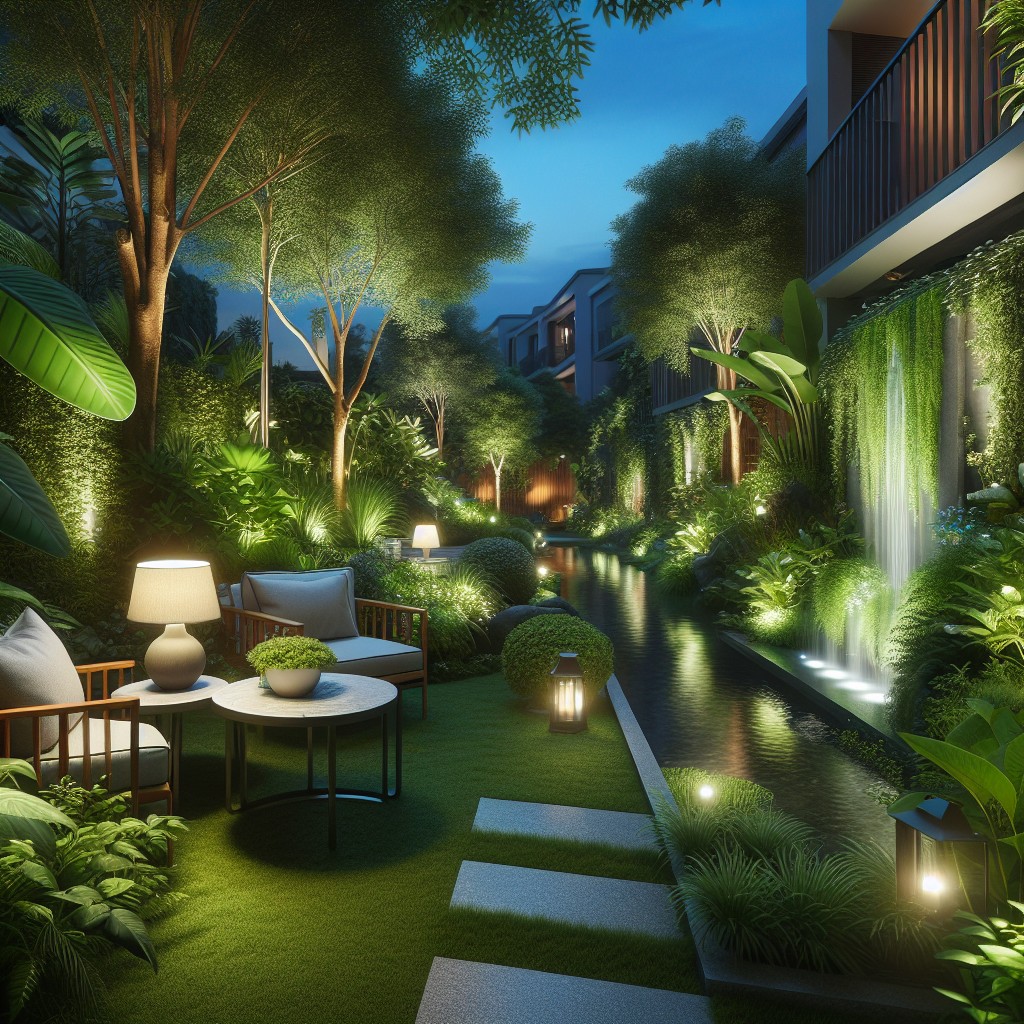
Bright light can be a beacon for bugs, so careful positioning matters. Let’s dive deep into this.
1. Location Matters: Aim for strategic placements. LED lights illuminating the path to your door or outlining your deck should be positioned away from the sitting area to avoid insects.
2. Landscape Lighting: Install LED lights high in trees and shine downwards. Insects will hover around the top of the trees rather than your gathering space.
3. Light Color: Yellow or warm-colored LED lights can be less enticing to bugs. Avoid “daylight” options which mimic the sun’s spectrum and are more likely to draw insects.
4. Dimmers: Consider LED lights with a dimming option. Lower intensity light is less likely to attract a swarm of bugs.
Remember, perfection is elusive; the goal isn’t to completely eliminate bugs, but to significantly reduce their presence in your outdoor living areas. Achieving a bug-free space can be a trial and error process, but the result is worth the effort.
Energy-efficient and Bug-resistant: Are LEDs the Ultimate Solution?
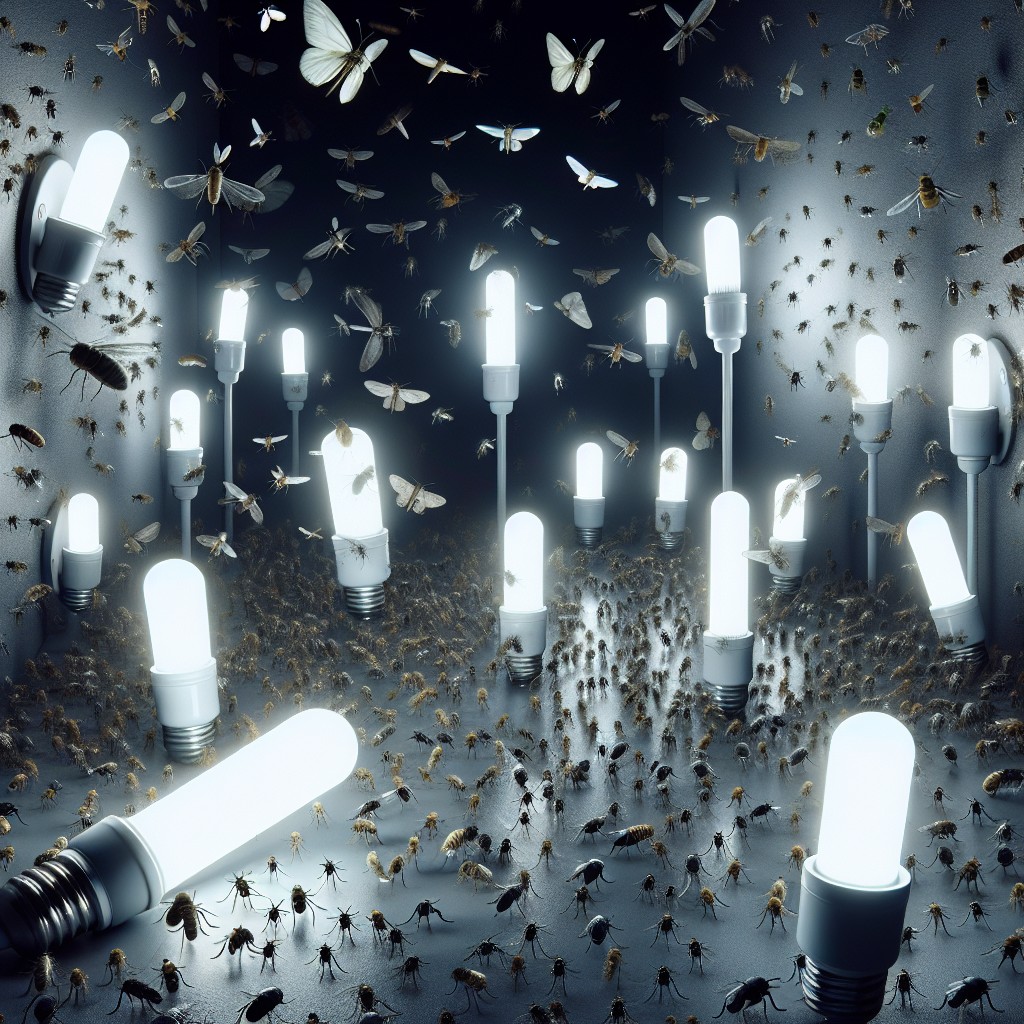
To consider LEDs as an ultimate solution for energy efficiency as well as bug resistance, it’s essential to delve into two key aspects—energy consumption and the spectrum of light.
LEDs are intrinsic energy-savers, consuming up to 85% less energy than traditional bulbs. Moreover, they have a longer lifespan, meaning you replace them less frequently, further conserving resources.
On the bug-resistance front, LEDs emit little to no UV light, a light spectrum largely responsible for attracting insects. Also, unlike incandescent or fluorescent lights, they produce less heat, making them less enticing to bugs.
Therefore, the switch to LEDs does offer tangible advantages in both respects. These lights can help minimize the presence of insects in your vicinity while keeping your energy consumption in check.
Customized LED Settings to Keep Bugs At Bay
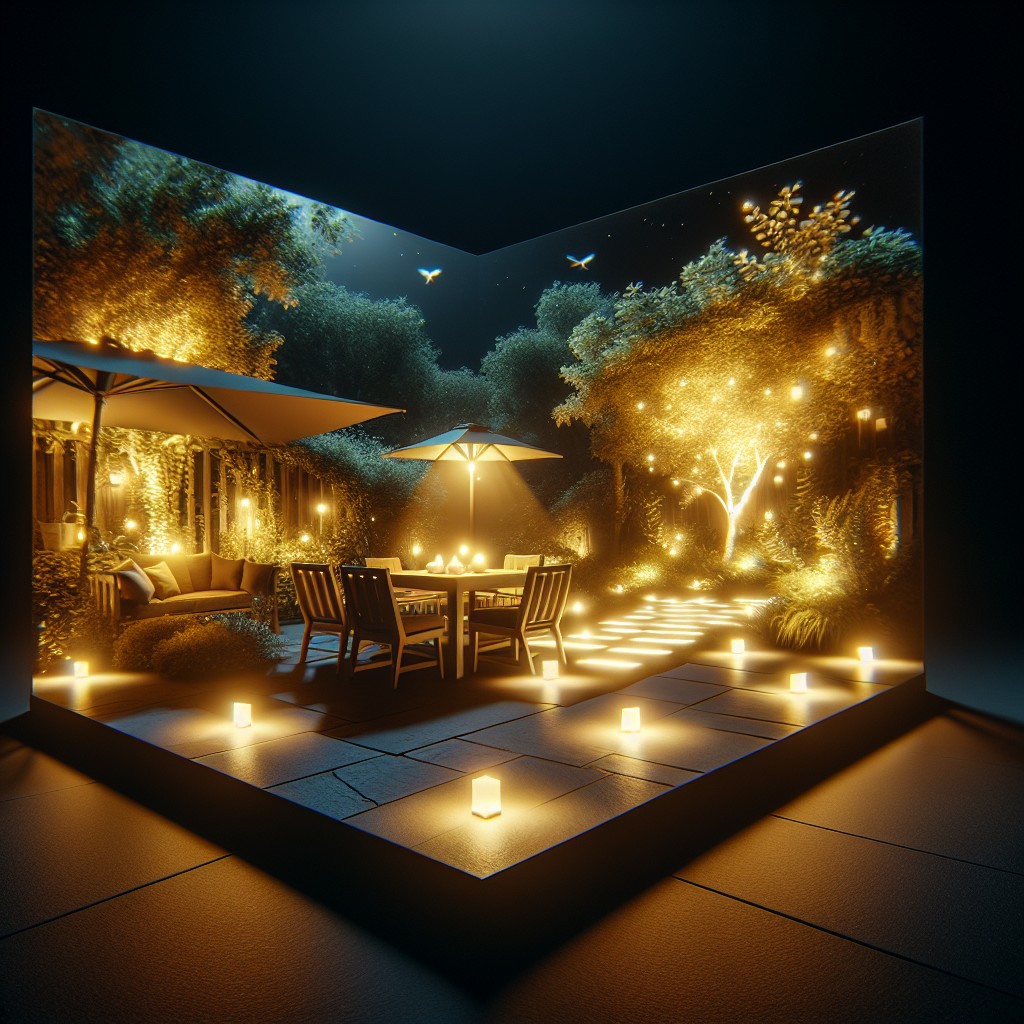
As effective as LED lights are in deterring bugs, you can enhance their bug-repelling properties by customizing the settings. Firstly, adjust the brightness of your LED lights. A lower brightness setting quite often can lessen the attraction for bugs.
Next, consider the color temperature settings of your LEDs. Lights with a warmer color temperature or red hue tend to attract fewer bugs compared to cooler or bluer lights. A good rule of thumb is to aim for a color temperature below 3,500 Kelvin.
Perhaps most crucially, control your light timing. Bugs are most active during the twilight hours, so try to avoid having your lights on during these peak periods. Light timers or motion sensor settings can assist in this, proving to be incredibly beneficial in keeping a bug-free environment.
Finally, synchronize your LED lights. Constantly swapping between lights can create an inconsistent environment, attracting insects. Keeping your lights harmonized reduces this inconsistency, making your space less enticing to bugs.
By implementing these customization variables, LED lights can serve as an excellent deterrent against unwanted bugs, making your living or working spaces more comfortable and enjoyable.
Ideas Elsewhere
- https://fortressbp.com/blog/168/for-porch-lights-that-dont-attract-bugs-try-railing-mounted-leds
- https://www.candlepowerforums.com/threads/best-outdoor-led-color-to-avoid-attracting-bugs.28956/
- https://outdoorlights.store/blogs/lights/outdoor-lights-that-dont-attract-bugs
- https://www.vulcantermite.com/home-improvement/outdoor-lighting-options-that-wont-attract-bugs/
- https://www.ledlightexpert.com/Do-LED-lights-Attract-Bugs-What-to-Know-About-Lights-and-Insects_b_130.html
- https://www.simplelighting.co.uk/blog/do-led-lights-attract-bugs/
- https://www.housedigest.com/935469/the-5-best-ways-to-keep-bugs-away-from-your-porch-lights/
